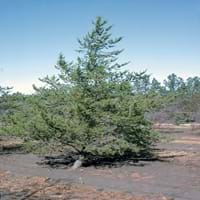Life Span
Perennial
Perennial
Type
Fruit, Tree
Needled or Scaled Evergreen
Origin
Not Available
North America, Northeastern United States, North-Central United States, Canada
Types
Not Available
Not Available
Habitat
Forests, gardens, Hill prairies, Homesteads, Rocky areas, Woodlands
Forests, Rocky areas, Rocky Ridges
USDA Hardiness Zone
Not Available
Not Available
AHS Heat Zone
Not Available
6-1
Sunset Zone
Not Available
Not Available
Habit
Bushy, Evergreen
Oval or Rounded
Flower Color
Light Green, Lime Green
Non Flowering Plant
Flower Color Modifier
Not Available
Bicolor
Fruit Color
Green, Light Green
Non Fruiting Plant
Leaf Color in Spring
Yellow, Green, Gray Green
Not Available
Leaf Color in Summer
Light Green
Not Available
Leaf Color in Fall
Yellow, Green, Gray Green
Not Available
Leaf Color in Winter
Yellow, Green, Gray Green
Not Available
Leaf Shape
Ovate
Acicular
Plant Season
Spring, Summer, Fall, Winter
Spring, Summer, Fall, Winter
Sunlight
Full Sun, Partial Sun, Partial shade
Full Sun
Type of Soil
Loam, Sand
Clay, Loam, Sand
The pH of Soil
Acidic, Neutral, Alkaline
Acidic, Neutral
Soil Drainage
Well drained
Well drained
Bloom Time
Early Summer, Summer, Late Summer, Early Fall
Not Available
Tolerances
Pollution, Salt, Soil Compaction
Drought
Where to Plant?
Ground
Ground
How to Plant?
Seedlings, Stem Cutting, Stem Planting
Stem Cutting, Tip cutting
Plant Maintenance
Low
Medium
Watering Requirements
Keep ground moist, Requires regular watering, Use Mulches to help prevent water loss during hot and windy weather
Do not water frequently, Does not require lot of watering
In Summer
Lots of watering
Lots of watering
In Spring
Moderate
Moderate
In Winter
Average Water
Average Water
Soil pH
Acidic, Neutral, Alkaline
Acidic, Neutral
Soil Type
Loam, Sand
Clay, Loam, Sand
Soil Drainage Capacity
Well drained
Well drained
Sun Exposure
Full Sun, Partial Sun, Partial shade
Full Sun
Pruning
Cut or pinch the stems, Do not prune during shooting season, Remove deadheads
Remove damaged leaves, Remove dead branches, Remove dead leaves
Fertilizers
High Potash Fertilizer
All-Purpose Liquid Fertilizer, Apply N-P-K, fertilize in growing season
Pests and Diseases
Bacterial Blight, Foliage-feeding caterpillars, Moth
Annosus Root Rot, Armillaria mellea, Brown Rot, Red blotch, Tar spot
Plant Tolerance
Pollution, Salt and Soil Compaction
Drought, Dry soil, Wet Site
Flower Petal Number
Single
Single
Foliage Texture
Fine
Not Available
Foliage Sheen
Matte
Not Available
Attracts
Caterpillar
Sawfly
Allergy
Skin irritation
Not Available
Aesthetic Uses
Not Used For Aesthetic Purpose
Not Used For Aesthetic Purpose
Beauty Benefits
Blood purifying, Glowing Skin, Good for skin and hair, Provides herbal hair care, Speed hair growth
Not Available
Environmental Uses
Air purification, soil stabilisation
Air purification
Medicinal Uses
Atherosclerosis, Cancer, Diabetes, Diarrhea, High blood pressure, High cholestrol, Obesity, Vitamin C
Not Available
Part of Plant Used
Fruits
Bark, Stem
Other Uses
Making Shampoo, Used for its medicinal properties, Used in herbal medicines
Used as firewood, Used as fuel, Used in pulpwood and lumber production
Used As Indoor Plant
No
No
Used As Outdoor Plant
Yes
Yes
Garden Design
Cottage garden
Screening, Wind Break, Topiary, Bonsai, Espalier
Botanical Name
Phyllanthus emblica
PINUS banksiana
Common Name
Indian Gooseberry, Amla , Awala
grey pine
scrub pine
In German
Stachelbeere
Jack Kiefer
In French
Groseille à maquereau
pin gris
In Spanish
Grosella
jack pine
In Greek
Φραγκοστάφυλλο
υποδοχή πεύκο
In Portuguese
Groselha
jack pine
In Polish
Agrest
sosna Banksa
Phylum
Magnoliophyta
Tracheophyta
Class
Magnoliopsida
Pinopsida
Order
Malpighiales
Pinales
Family
Phyllanthaceae
Pinaceae
Clade
Angiosperms, Eudicots, Rosids
Not Available
Tribe
Phyllantheae
Not Available
Subfamily
Not Available
Not Available
Number of Species
Not Available
Not Available
Importance of Indian Gooseberry and Jack Pine
Want to have the most appropriate plant for your garden? You might want to know the importance of Indian Gooseberry and Jack Pine. Basically, these two plants vary in many aspects. Compare Indian Gooseberry and Jack Pine as they differ in many characteristics such as their life, care, benefits, facts, etc. Every gardener must at least have the slightest clue about the plants he wants to plant in his garden. Compare their benefits, which differ in many ways like facts and uses. The medicinal use of Indian Gooseberry is Atherosclerosis, Cancer, Diabetes, Diarrhea, High blood pressure, High cholestrol, Obesity and Vitamin C whereas of Jack Pine is Not Available. Indian Gooseberry has beauty benefits as follows: Blood purifying, Glowing Skin, Good for skin and hair, Provides herbal hair care and Speed hair growth while Jack Pine has beauty benefits as follows: Blood purifying, Glowing Skin, Good for skin and hair, Provides herbal hair care and Speed hair growth.
Compare Facts of Indian Gooseberry vs Jack Pine
How to choose the best garden plant for your garden depending upon its facts? Here garden plant comparison will help you to solve this query. Compare the facts of Indian Gooseberry vs Jack Pine and know which one to choose. As garden plants have benefits and other uses, allergy is also a major drawback of plants for some people. Allergic reactions of Indian Gooseberry are Skin irritation whereas of Jack Pine have Not Available respectively. Having a fruit bearing plant in your garden can be a plus point of your garden. Indian Gooseberry has showy fruits and Jack Pine has no showy fruits. Also Indian Gooseberry is not flowering and Jack Pine is not flowering . You can compare Indian Gooseberry and Jack Pine facts and facts of other plants too.





